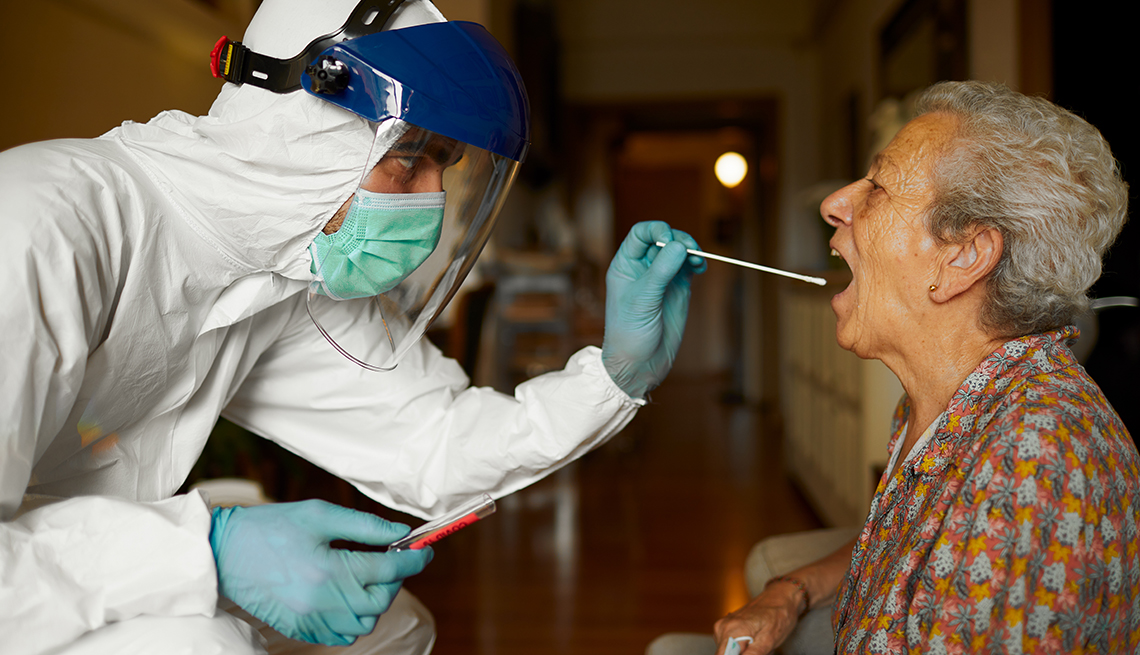AARP Hearing Center
COVID-19 infections in America's nursing homes are back on the rise, according to an exclusive new AARP analysis of government data, with a dozen states concentrated in the Midwest and West experiencing sharp upticks. While resident and staff infections have risen by 8 percent nationally between late September and late October, these 12 surging states have seen nursing home resident cases spike by 40 percent or more, while nursing home staff infections have ballooned by at least a third.
More than half of the nation's 15,000-plus nursing homes are reporting COVID-19 infections of one or more staff members, the analysis shows, with more than a quarter reporting infections in at least one resident. Since a similar AARP analysis a month ago, almost 600 more facilities are reporting new staff infections and more than 200 are reporting new resident infections.
The U.S. had seen a decline in nursing home cases and deaths in the final weeks of summer and early weeks of fall. The new increase in spread suggests that nursing homes are feeling the effects of the surging community transmission that's occurring all over the country.
The upward infection trends are “terrible news” and “really shocking and truly outrageous,” says Bill Sweeney, AARP's senior vice president of government affairs, given the turmoil that long-term care has already been through.
Long-term care facilities, including nursing homes, assisted living, adult day centers and others, have experienced more than 91,000 resident and staff deaths since January — roughly 40 percent of the national death toll — according to the Kaiser Family Foundation's tally. More than 600,000 residents and staff have contracted the disease.





































































